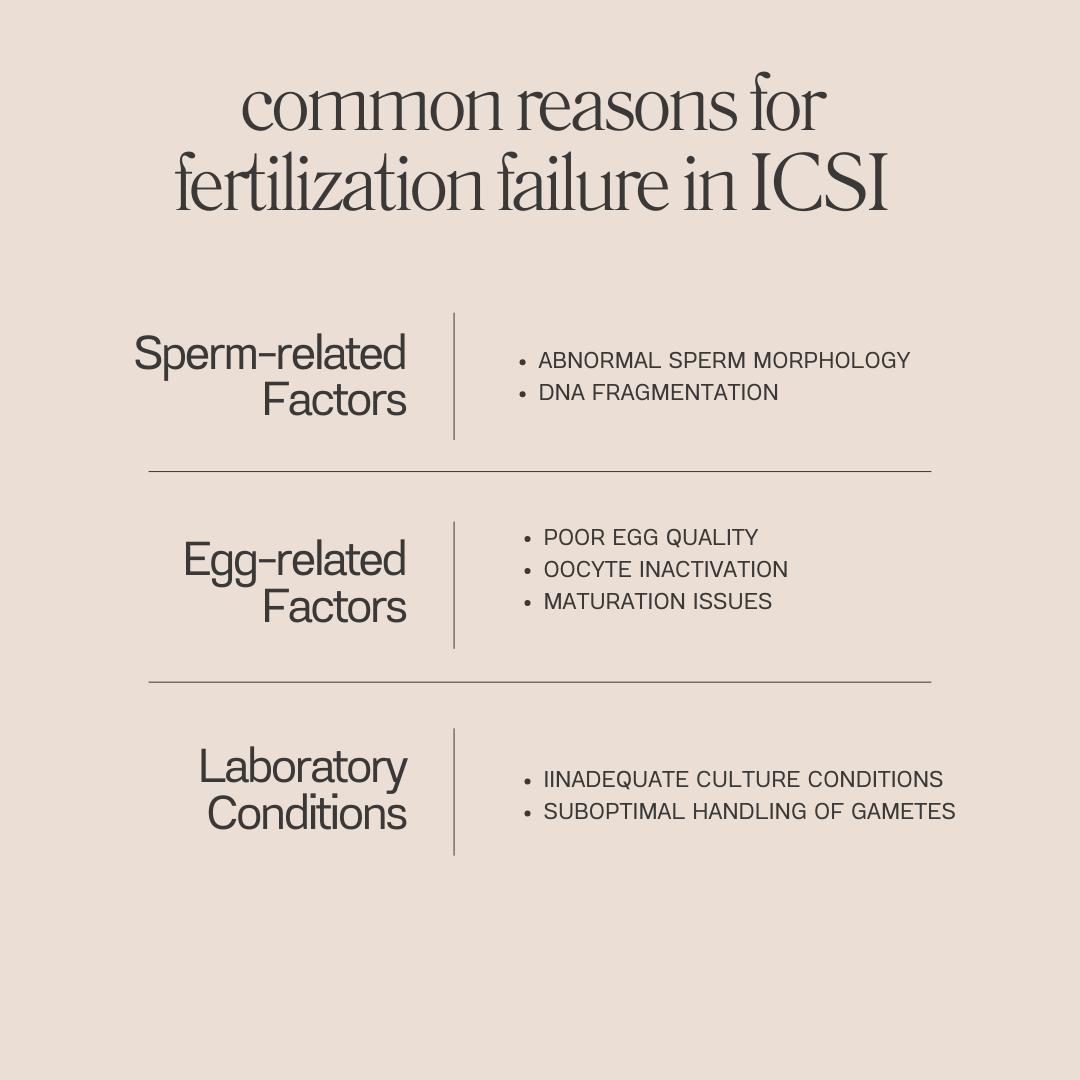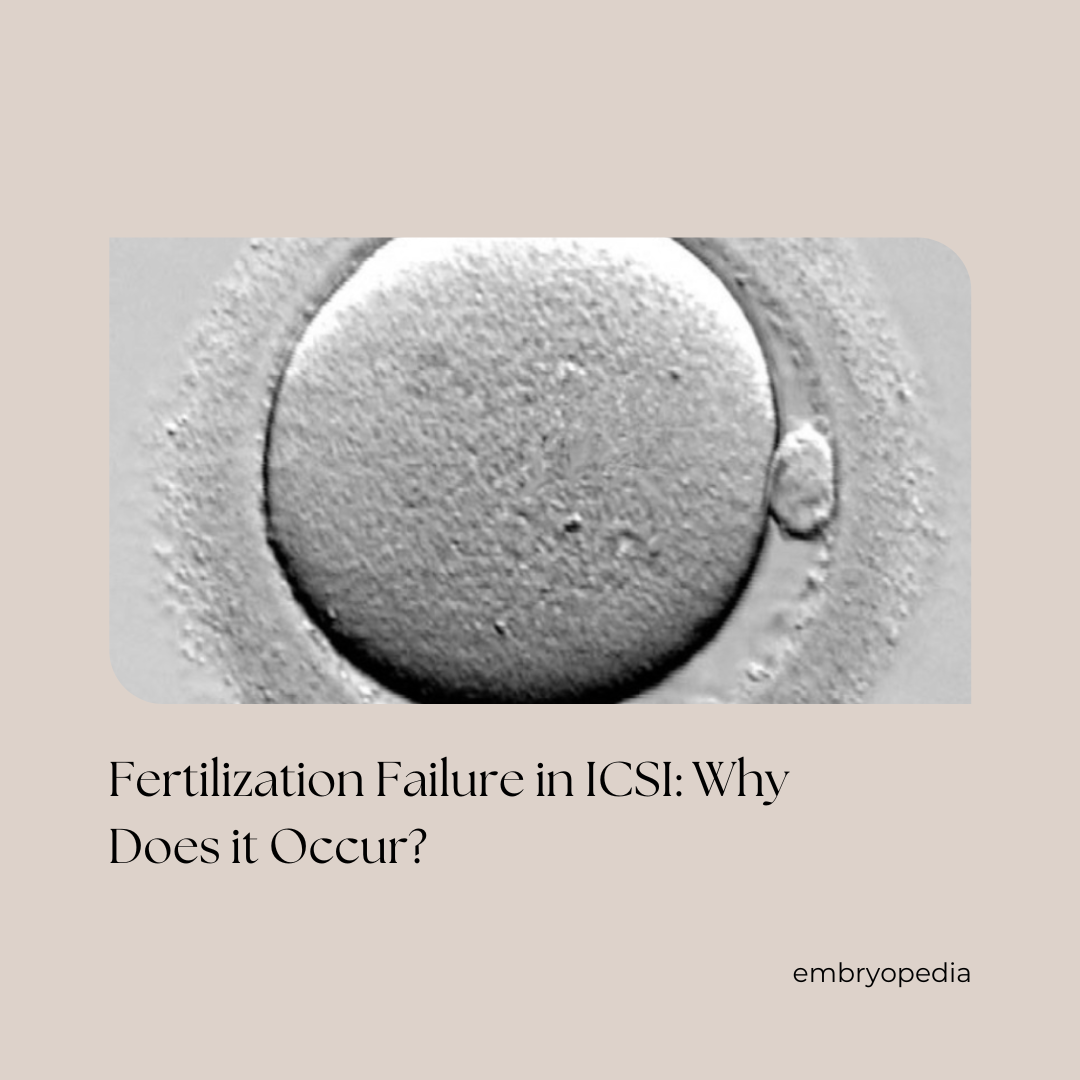In recent years, Intracytoplasmic Sperm Injection (ICSI) has become a widely used assisted reproductive technology to address male infertility and various other fertility challenges.
While ICSI has shown remarkable success rates, cases of fertilization failure after ICSI do occur, leaving both patients and healthcare professionals seeking answers.
So in this article, we explain the reasons behind ICSI failure, and explore possible treatment options in such cases.
Read on!
Table of contents
- What is ICSI?
- What does fertilization failure in ICSI mean?
- What are some common reasons for fertilization failure in ICSI?
- What are some ways to reduce fertilization failure in ICSI?
- What do I do if my ICSI fails?
What is ICSI?
Intracytoplasmic sperm injection is a type of assisted reproductive technology technology that involves choosing a single sperm to inject into a mature egg. The process is similar to IVF, except in the fertilization stage.
Post ICSI, embryos are allowed to grow in the lab until fresh or frozen embryo transfer.
What does fertilization failure in ICSI mean?
During ICSI, sperm is injected into the egg to induce fertilization. Once they fertilize, they start dividing into two, four, eight cells, and so on to form an embryo.
Fertilization failure in ICSI refers to fertilization of the egg and sperm, not occurring, leading to lack of embryo formation.
What are some common reasons for fertilization failure in ICSI?

Despite the high success rates of ICSI, some factors contribute to fertilization success. It’s important for couples undergoing this procedure to understand these factors and how it may affect the process. These factors include:
- Sperm-related Factors:
- Abnormal sperm morphology
- DNA fragmentation
b. Egg-related Factors:
- Poor egg quality
- Oocyte inactivation
- Maturation issues
c. Laboratory Conditions:
- Inadequate culture conditions
- Suboptimal handling of gametes and embryos
Let’s do a deep dive of these factors:
Sperm-related Factors
- Abnormal Sperm Morphology:
Abnormalities in sperm shape can hinder successful fertilization. For instance, in cases, such as globozoospermia, where sperm do not have an acrosome, repeated ICSI cycles
may be needed.
Advances in sperm selection techniques, such as IMSI which has morphokinetic analysis, can help to identify and isolate sperm with normal morphology, thus increasing the chances of successful fertilization.
- DNA fragmentation
Sperm DNA damage can also be a cause for fertilization failure In ICSI. In such cases, methods such as MACS are employed to separate cells with less DNA fragmentation. Such cases may also require repeated ICSI cycles.
Egg-related Factors
- Poor Egg Quality:
The quality of the egg is paramount for successful fertilization and subsequent embryo development. Factors such as age, lifestyle, and underlying health conditions can impact egg quality and thus chances of fertilization in ICSI.
- Oocyte inactivation
Oocyte or egg activation is a crucial step needed to start fertilization. This occurs once the sperm enters the egg. In cases such as advanced maternal age, activation may not happen, leading to fertilization failure, even with ICSI cycles. in some cases, using oocyte activation media can help reduce the chances of fertilization failure.
- Maturation Issues:
In some cases, eggs may not mature properly, impeding the fertilization process. Ovulation-inducing medications and precise timing of egg retrieval help address maturation issues, ensuring that mature and viable eggs are available for fertilization.
Laboratory conditions
It is possible that suboptimal handling of gametes or embryos may lead to instances of fertilization failure. It is also crucial to monitor different aspects of the laboratory and revise the standard operating protocols to ensure that the environment is favorable for the survival of egg and sperm outside the body.
What are some ways to reduce fertilization failure in ICSI?
Fertilization failure can be challenging, especially when detailed analysis is required to pinpoint the cause and resolve it accordingly. Here are some ways to combat or reduce the instances of fertilization failure that can be opted:
- Knowing the medical history of the patients and planning beforehand
Knowing the medical history of the male as well as the female patient keeps doctors and embryologists informed of the possible challenges they may encounter. In such cases, tailoring treatment protocols accordingly might help.
- Using supportive media
Due to the widespread usage of IVF and its standardization worldwide, several companies manufacture media for processes and sub-processes in IVF. One such example is oocyte activation media. This can be used in cases where the maternal age is high, or there have been reported instances of activation failure. Using this media after the ICSI procedure can help with activation, thus helping the fertilization process
- Use latest technologies
Technology in the field of embryology is developing day by day leading to better imaging techniques and better assays for identifying and selecting the best gametes for fertilisation. For instance, in cases of high DNA fragmentation in sperm, magnifying technologies such as IMSI may help select the most viable and morphologically normal sperm, thus helping with fertilization rates.
- Using processes such as rescue ICSI
Rescue ICSI is the process of repeating ICSI on day 1 of an unfertilized oocyte. This is almost like a second try, in hopes of achieving fertilization. While the success rates of such procedures are not high, it is worth an attempt, to give couples a chance during the cycle.
- Optimising laboratory conditions
It’s important to revisit laboratory protocols, standard operating procedures, and the overall conditions of the laboratory on a daily, weekly, and monthly basis. This helps ensure that there are no minor inconveniences that can contribute to gamete damage during fertilization.
The final word: what do I do if my ICSI fails?
The first step is to take a moment and breathe.
We know it can be a lot to hear that all the time and the effort you invested in a cycle may have not had the results that you expected.
However, this is still a challenge or a barrier that can be crossed, thanks to evolving technologies and processes that help evade and resolve issues such as this. Latest technologies, personalized treatment, plans, et cetera are all steps taken to combat fertilization failure, Even in extreme cases, opting for cycles with donor eggs, or sperm is still a possibility.
Ultimately, fertilization failure is a hard pill to swallow. Talking to your healthcare provider and having an idea of these risks can help you have a realistic idea of the outcome.
And as always, it helps to have your inner circle of people support you throughout the process.
You’ve got this!
